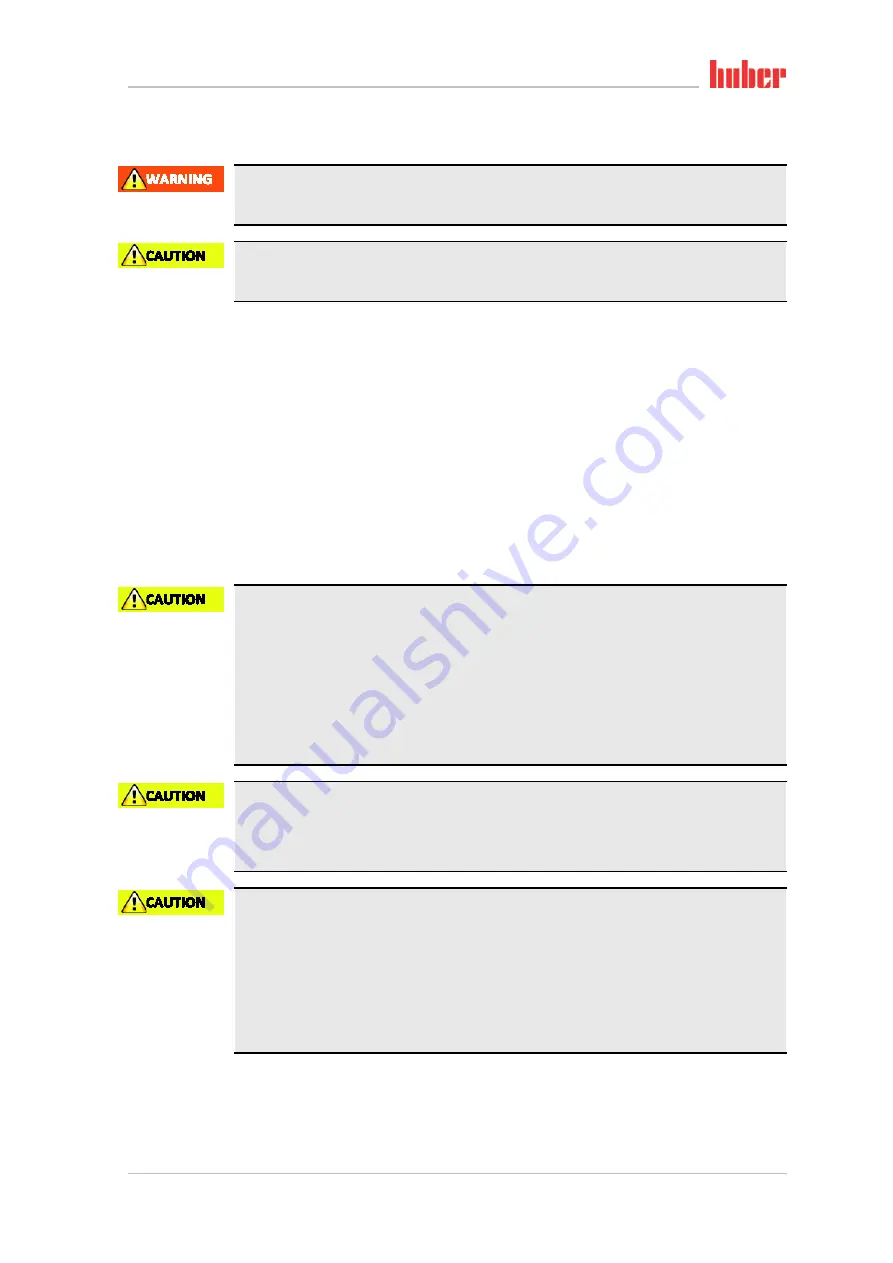
Commissioning
Chapter 2
OPERATION MANUAL
V2.3.0en/07.06.19//17.12
Unichiller®
27
2.5
Installation conditions
Temperature control unit is connected to the power supply line
DEATH FROM ELECTRICAL SHOCK BY DAMAGE TO THE POWER CABLE.
Do not put temperature control unit on power cable.
Operating the temperature control unit fitted with castors without brakes activated
CRUSHING OF LIMBS
Activate brakes on the wheels.
▪
Allow the temperature control unit to acclimate for about 2 hours when changing from a cold to a
warm environment (or vice versa). Do not turn on the temperature control unit before!
▪
Install upright, stable and without tilt.
▪
Use a non-combustible, sealed subsurface.
▪
Keep environment clean: Prevent slip and trip hazards.
▪
Wheels must be locked after the installation, if installed!
▪
Spilled/leaked thermofluid must be disposed of immediately and properly. Follow the instructions
on page 15, section
»Proper disposal of resources and consumables«
for the disposal of ther-
mofluid and material.
▪
Observe the floor load bearing capacity for large units.
▪
Observe the ambient conditions.
2.6
Recommended temperature control and cooling water hoses
Use of unsuitable/defective hoses and/or hose connections
INJURIES
Thermal fluid
Use appropriate hoses and/or hose connections.
Check periodically for leaks and the quality of the hose and hose connections and take suitable
measures (replace) as required.
Isolate and protect temperature control hoses against contact/mechanical load.
Cooling water
Reinforced hoses must be used to satisfy tougher safety requirements.
Shut off the cooling water supply to the temperature control unit even for shorter downtimes
(e.g. overnight).
Hot or cold thermal fluid and surfaces
BURNS TO LIMBS
Avoid direct contact with the thermal fluids or the surfaces.
Wear your personnel protective equipment (e.g. temperature-resistant safety gloves, safety
goggles, safety footwear).
Uncontrolled formation of ice at the connections and hoses of the thermal fluid circuit
SLIP AND TRIP HAZARD
If the temperature is controlled in the minus range, ice forms at the hoses and connections of
the thermal fluid circuit. This occurs by condensing and freezing of atmospheric humidity.
Check the strength of the ice formation. If too much ice is formed, this increases the risk of the
temperature control unit tipping over. Secure the temperature control unit against tipping if
this is the case.
Check the ground below the ice formation for condensation water. Collect the condensation
water with a suitable container or thoroughly remove it at regular intervals. You thus prevent
the danger of slipping caused by condensation.
To connect applications, use only temperature control hoses that are compatible with the thermal
fluid used. When selecting temperature control hoses, also pay attention to the temperature range
in which the hoses are to be used.
















































